The mule deer is one of the West’s signature big game animals. The big-eared cervids are found only on one side of the Mississippi River, but they’re particularly iconic in the Rocky Mountain region. Muleys draw hunters from across the country — and, by all indications, the Western mule deer population is in serious trouble.
Winter came early for much of the U.S. last year, and it stayed well beyond its welcome, dumping deep snows in several “once in a generation” type weather events. Blizzards, record snowfall, and the coldest temperatures in years walloped the Western landscape well into spring, making life miserable for human beings in the region. Those harsh conditions were downright deadly for Western wildlife.
The harsh winter killed off most of 2022’s mule deer fawns and plenty of elk calves. The weather also puts this year’s crop in a bad position right out of the birth canal. If their moms managed to survive the winter, they probably limped into fawning season in pretty rough shape, and fawns born to beat up, unhealthy mothers are already at a major disadvantage in terms of survival.
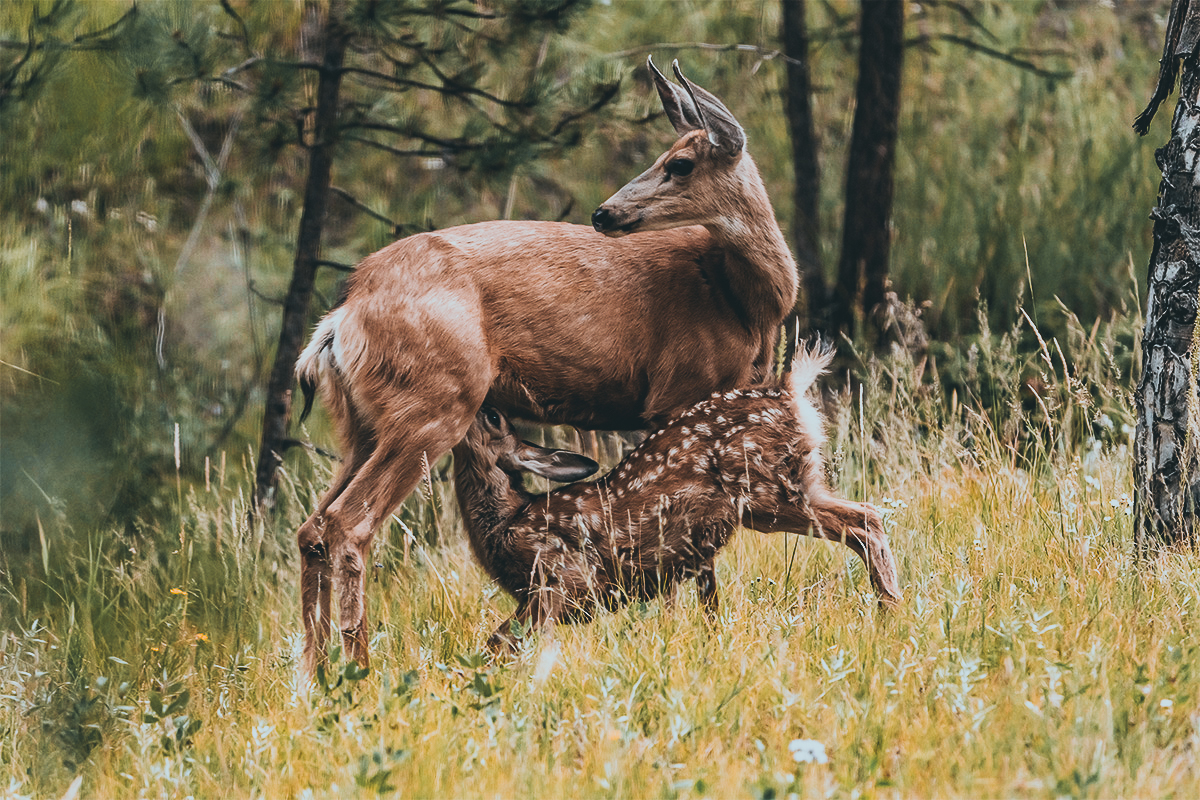
Malnourished does, in turn, give birth to smaller, weaker fawns that often die within hours of delivery. And nutritionally stressed moms are more likely to abandon their newborns, leaving them as easy fodder for scavengers, bears, and coyotes.
That means deer, elk, and pronghorn populations will struggle to recoup lost numbers, and this year’s super shitty winter could have a long-reaching negative effect on the animals we all love to hunt — and next winter is coming.
However, the die-off caused by last winter’s horrendous weather was just the salt in the already gaping wound of mule deer mortality. Western states like Colorado and Wyoming have tracked decreases in mule deer populations for years.
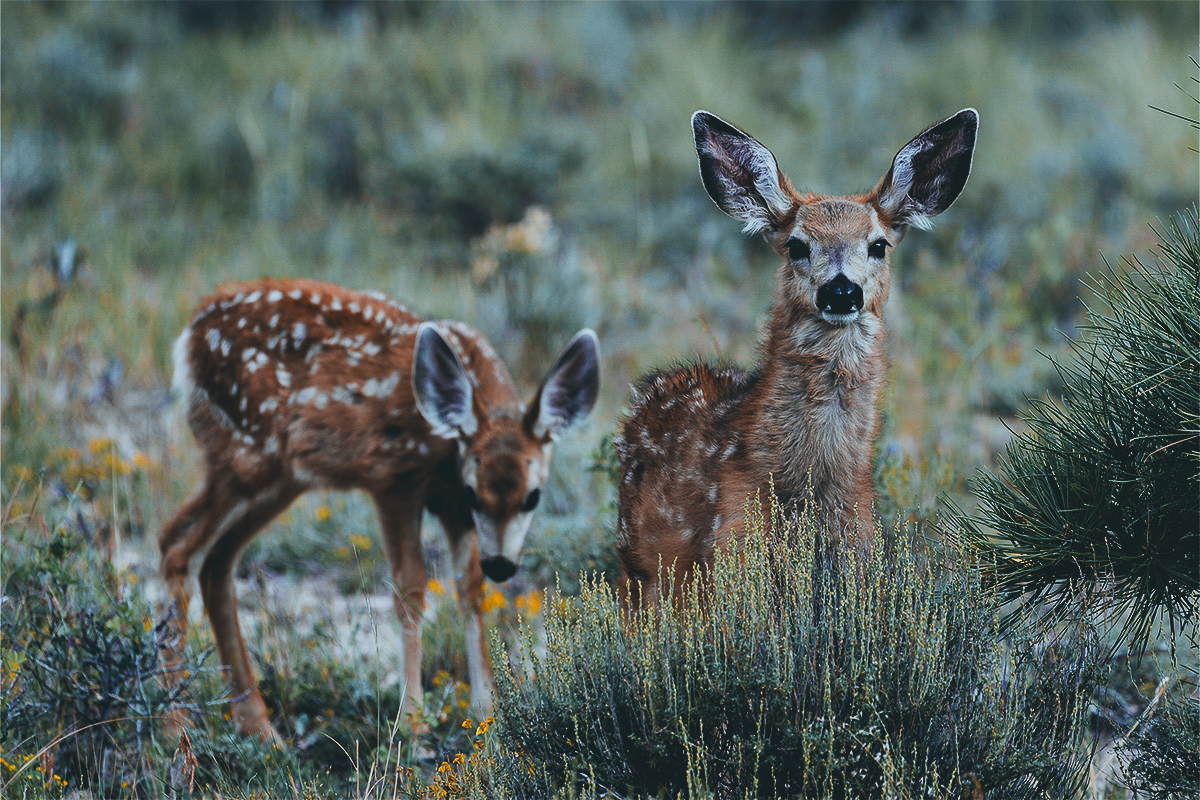
Northwestern Colorado’s White River area, nicknamed the “mule-deer factory” for its high deer density, was once home to more than 100,000 muleys. In 2013 the herd was estimated at just 32,000 deer. The mule deer struggle is nothing new, and the cause is far from simple.
Jim Heffelfinge, chairman of the Western Association of Fish and Wildlife Agencies and Mule Deer Working Group, said that years of research and collaboration among wildlife agencies suggest muley populations aren’t impacted by a single factor like rough winters. Instead, it is a “synchrony” of events.
The West’s historic decades-long megadrought, wildfires, disease, invasive species, and especially human development and subdivision of land all combine to create a cocktail of suck for the Western mule deer.
“We seem to keep coming back to the same things that haunt us,” said Ed Arnett, chief executive officer of The Wildlife Society. “The bottom line is habitat continues to be lost, fragmented, or degraded faster than it’s being restored.”
Here are what some of the worst-hit states in the Mountain West and Great Plains are doing to help reduce mule deer population declines.
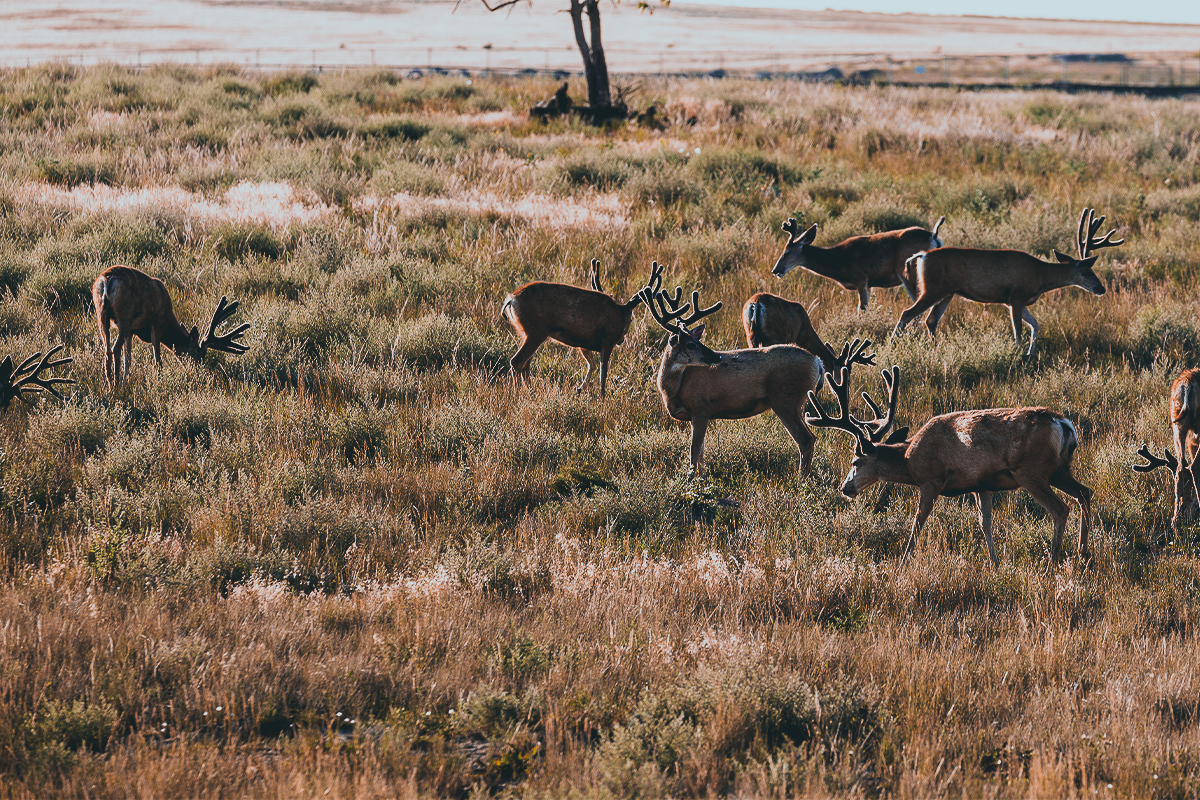
RELATED — Winter Storm URI Devastates Texas Exotic Wildlife and Fish Numbers
Wyoming
In mid-February, with most of the Cowboy State wrapped in a thick blanket of deeper-than-normal snow, the Wyoming Game and Fish Department initiated emergency elk feeding in several locations in western Wyoming.
However, mule deer were not targeted for emergency feeding due to Chronic Wasting Disease (CWD) concerns and their inability to properly digest hay. Evaluations of emergency feeding efforts in other states showed that feeding stations didn’t ultimately lower the mule deer death toll.
While exact numbers aren’t available, the Wyoming Range winterkill may have taken out as many as 80% of the area’s mature mule deer and possibly wholly wiped out this year’s fawns.
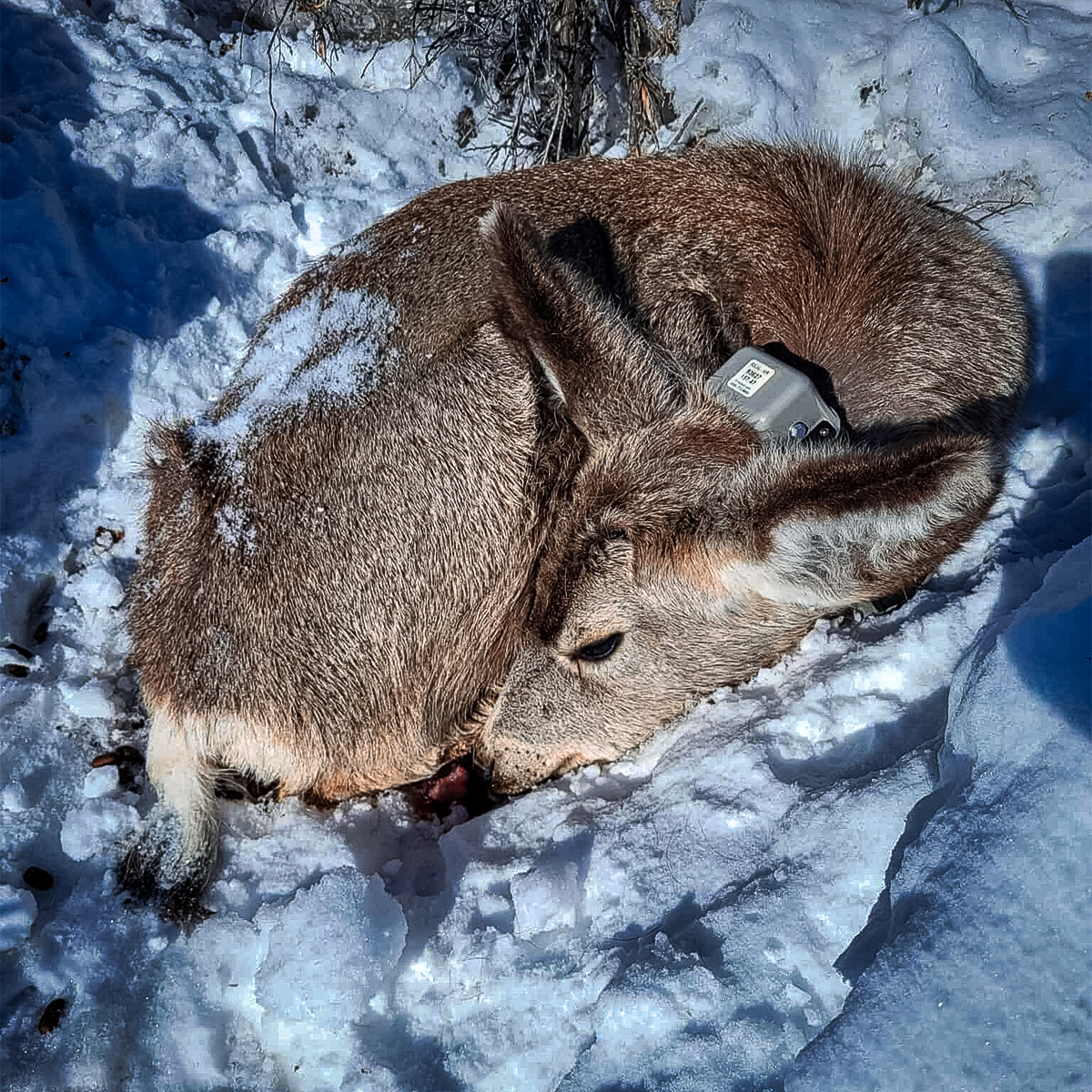
Wyoming’s pronghorn antelope were probably hit worst by vicious winter conditions. In addition to below-freezing temps and deep snow, the state’s pronghorns were hit with a rare strain of pneumonia that swept through herds like a flood tide.
To help Cowboy State pronghorns recover, the Wyoming Game and Fish Commission cut 10,000 antelope tags for the 2023 hunting season.
Wyoming also instituted a hefty reduction in mule deer tags. Wyoming hunters will have access to 4,410 fewer muley tags across seven management areas this fall. The cuts affect both “antlered” and “any” deer tags.
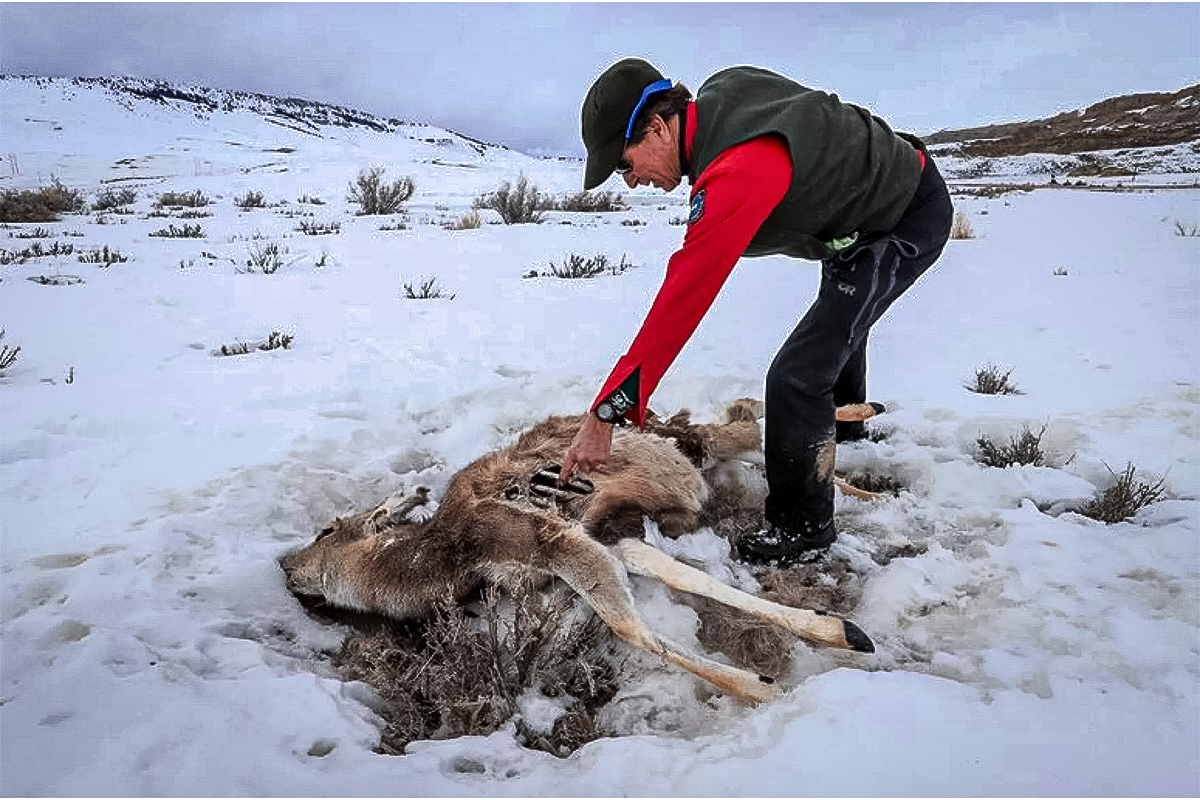
“We have heard from a lot of people, ‘Shut everything down,’” Wyoming Game and Fish director Brian Nesvik said. “But buck deer don’t have babies.”
However, some hunters don’t think reducing available tags is enough. So avid hunter and Wyoming native Zachary Key organized a raffle to let more deer live to see next winter. Hunters can enter the raffle with their name, phone number, and unused mule deer, elk, or pronghorn tag to win pretty rad donated prizes, including a custom rifle chambered in 6.5 PRC, an eight-day Alberta wolf hunt, and a custom truck build.
GOOD GEAR – Explore the Unkown With BRCC’s Beyond Black Roast
Utah
Utah snow is the stuff of legend. It’s often labeled “The Greatest Snow on Earth,” and the Salt Lake State is a winter wonderland mecca for deep-powder skiers. This winter’s Utah snowfall had skiers and snowboards celebrating the best conditions in 20 years, with the snow water equivalent breaking a 40-year record.
While piling snow was good news for Utah tourism, it was disastrous for the state’s wildlife. Extreme drought conditions had already been hammering deer populations since June 2020.
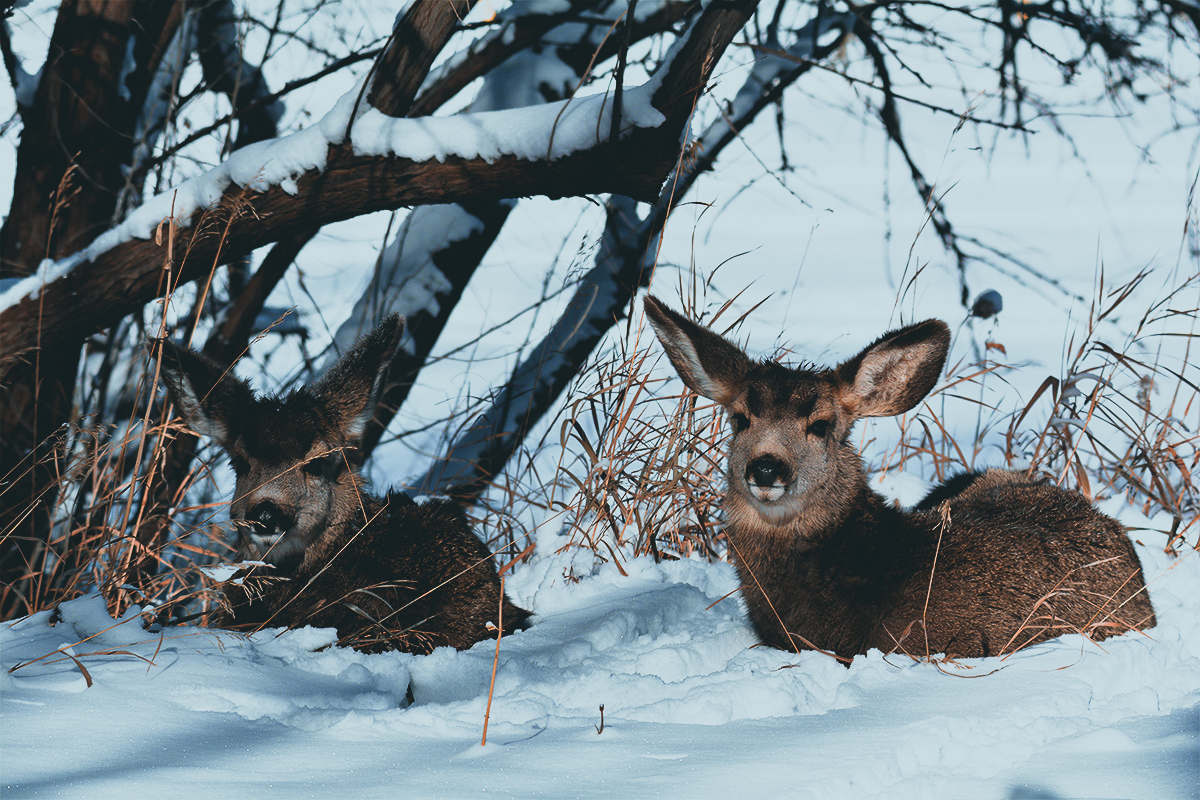
Unlike Wyoming, Utah set up 11 emergency mule deer feeding sites after biologists discovered in January that many were already suffering from lower-than-average body fat stores.
“In the areas where we’re feeding, the vegetation that deer eat in the winter is completely covered by snow,” Utah Department of Wildlife Resources (DWR) Northern Region Wildlife Manager Jim Christensen said.
The state also nixed shed hunting until May due to concerns about weakened deer being vulnerable to repeated human disturbance.
“The unnecessary expenditure of energy and stress associated with disturbance — like being repeatedly followed by someone gathering shed antlers — may significantly decrease the survival rates of big game animals, particularly deer, this winter,” DWR director J. Shirley said.
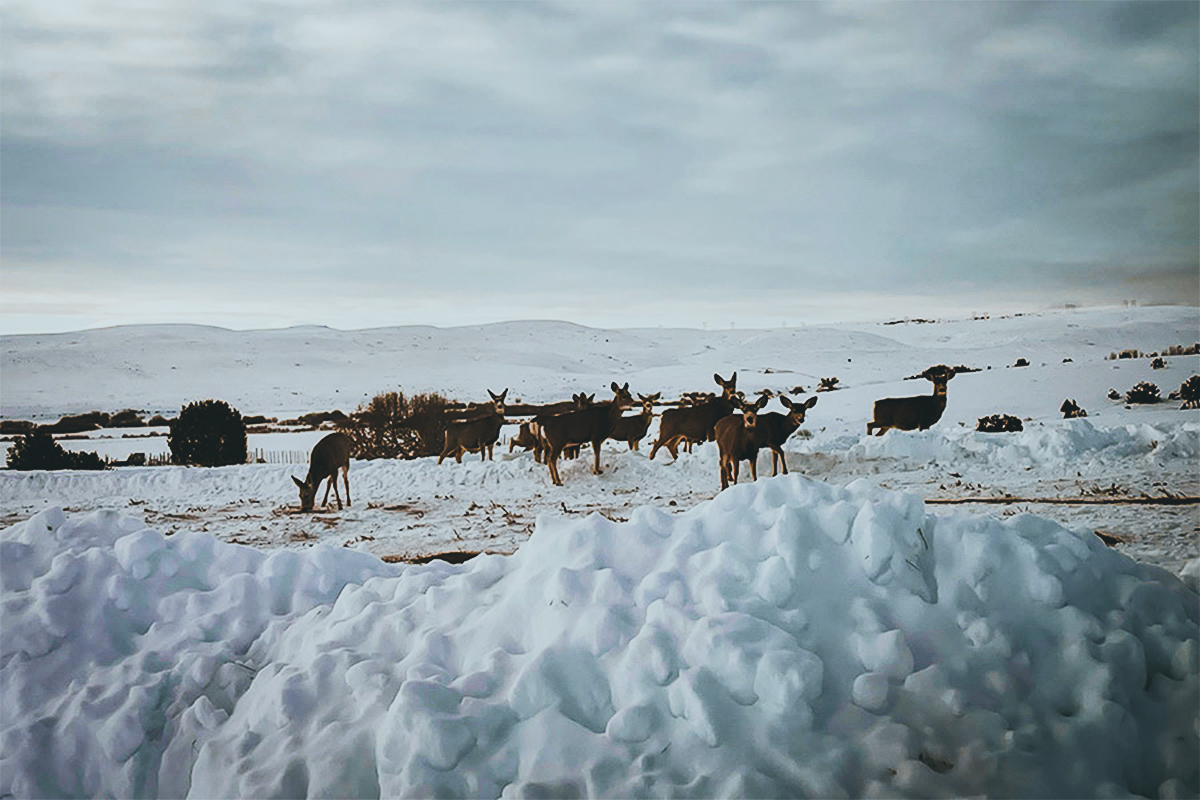
While numbers show that overall, Utah’s mule deer population is on the rebound, experts caution that statewide averages can be deceiving. Utah wildlife officials say muley numbers have increased by around 30,000 deer over estimates from March 2022.
“This is one of those years where average doesn’t really mean that much because things can be so extremely negative in some parts of the state, and at the same time, we’re looking at record highs in other parts of the state” DWR big game coordinator Dax Mangus said.
In response, Utah cut the number of available big game hunting permits for the fifth year in a row.
Mule deer herds in the north and northeastern parts of Utah were hit hardest, and management units in those areas will see the most significant reduction in issued tags in 2023. In total, 64,725 general-season deer hunting permits will be available, 8,350 fewer than last year, with 11 of the 31 deer hunting units receiving fewer permits.
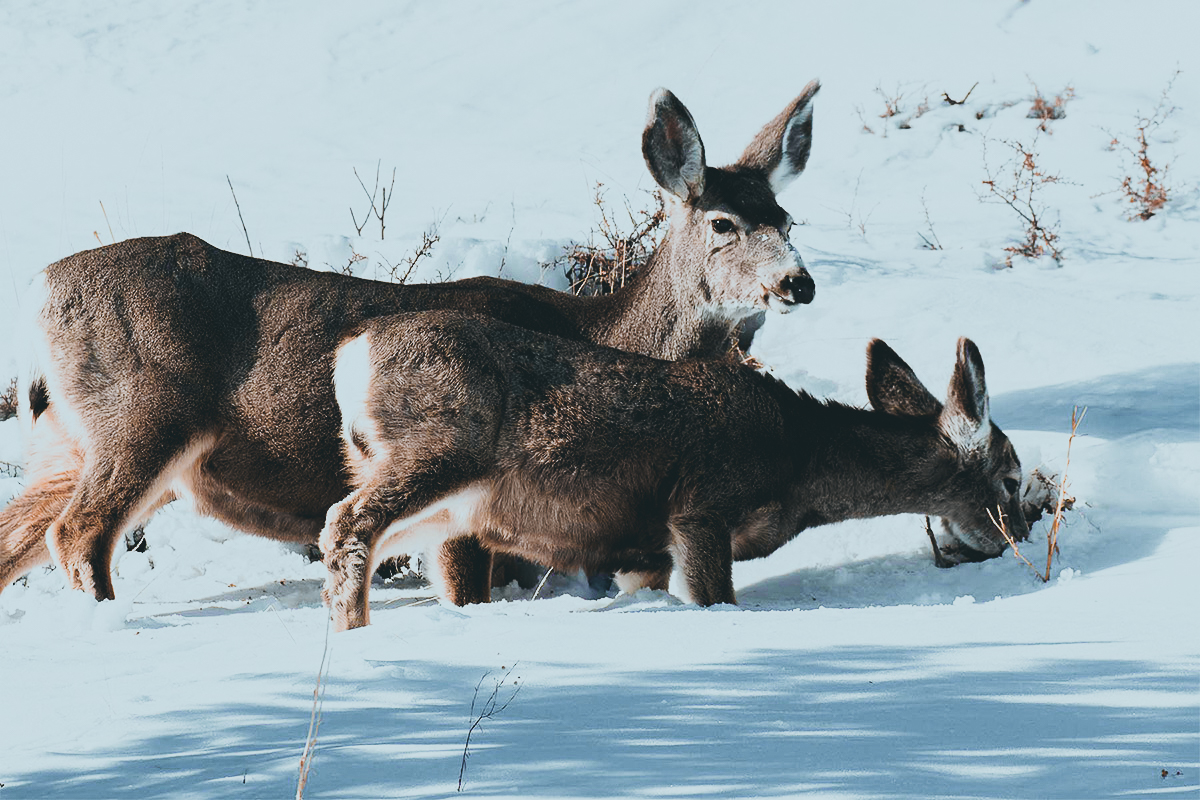
RELATED — How To Score Whitetail and Mule Deer Trophies
North Dakota
The North Dakota Game and Fish Department’s annual spring mule deer survey showed mule deer populations down by 29% from 2022 and 5% below the long-term average. Biologists have conducted the spring mule deer survey in 24 study areas since the 1950s. The aerial survey is conducted after snow melt but before the trees leaf out, which provides the best conditions for counting mule deer from the air.
In this year’s spring survey, 1,994 mule deer were counted in 286.3 square miles, putting the overall Badlands mule deer density at seven deer per square mile.
Bruce Stillings, big game management supervisor for Game and Fish in Dickinson, North Dakota, claims the stark deer decline was caused by extreme weather conditions this past winter which came right on the heels of a historic blizzard in the spring of 2022 that dumped 40 inches of snow on the Badlands.
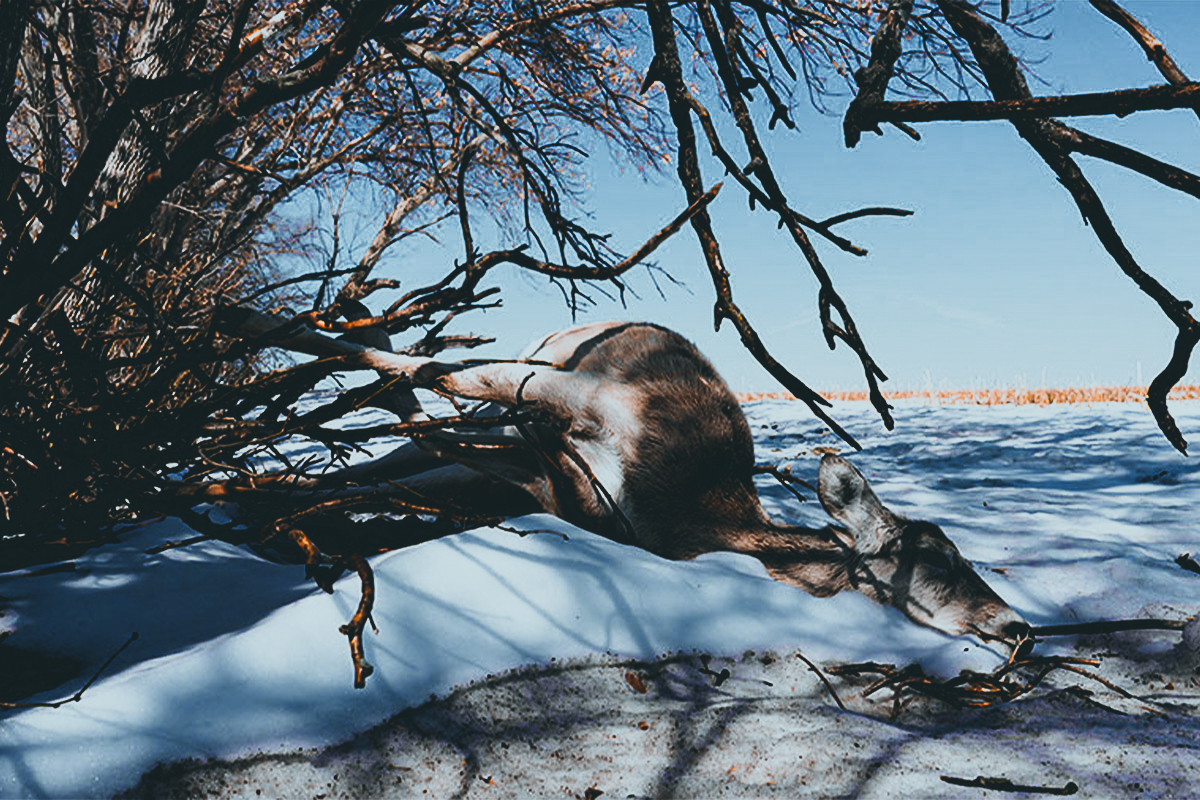
However, biologists had concerns about mule deer numbers heading into the winter. Fall survey results from October were 31% lower than the previous year, with fawn production well below the long-term average.
In response, the number of available mule deer tags took a major nosedive in Roughrider country, with only 53,400 available for the 2023 season, the lowest number since 2016 and a far cry from the department’s goal of 75,000.
“The severity of winter conditions this year was record-setting, particularly in the eastern half of the state,” Casey Anderson, the chief of NDGF’s wildlife division, said. “Conservative license allocations are intended to maintain hunting opportunities while continuing to encourage population growth.”
GOOD GEAR – Embody the Ethos of the Quiet Professional With BRCC’s Silencer Smooth Roast
Nebraska
Cornhusker muleys were already hurting (partly due to meningeal brain worms in western game units) before a mid-December blizzard stalled on the Great Plains and dumped nearly 30 inches of snow on northern Nebraska. More snow followed, with serious winter storms crossing the state in January, February, and April.
In 2022, hunters killed 11% fewer mule deer statewide from 2021 and 22% less than in 2020. It was the lowest mule deer buck harvest since 1981.
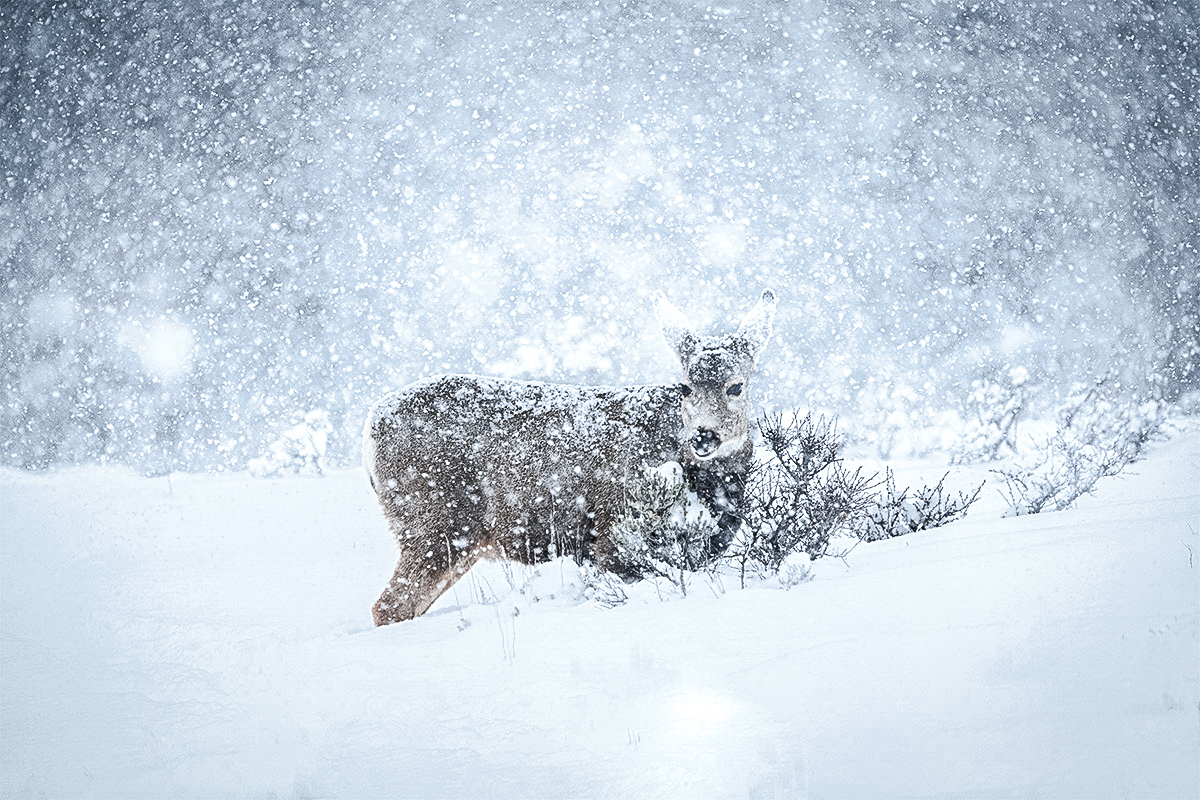
In response, Nebraska made significant cuts to available hunting permits, cutting the number of muzzleloader permits in half and severely reducing nonresident hunting opportunities.
RELATED — How To Make the Most of a 2-Day North Dakota Deer Hunting Trip
Idaho
The Idaho Department of Fish and Game (DFG) was poised to raise the state’s quota on mule deer does.
“Before this winter hit, we’d been seeing steady growth in mule deer herds in southeast Idaho,” DFG deer and elk coordinator Toby Boudreau said. “So much so that we were ready to propose additional antlerless hunt opportunities for the 2023 fall season.”
With several late-season snow storms, by mid-April southeastern Idaho was still covered with roughly 182% to 237% of the long-term average snow.
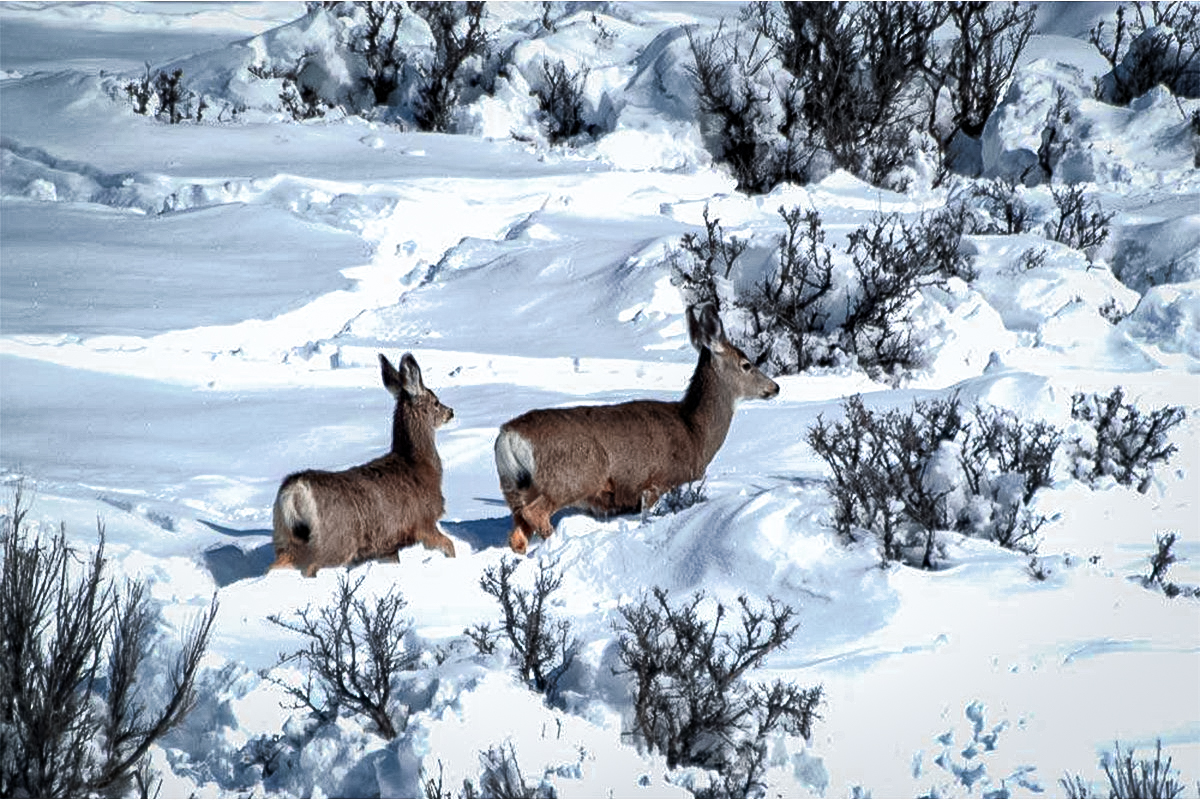
However, with the extreme temperatures and snow depths that covered eastern Idaho for much of the winter, DFG knew it would be a bad year for fawn survival. The state decided to take a proactive approach for the coming hunting season by eliminating many of the either-sex and antlerless hunt opportunities proposed for the 2023-24 season.
GOOD GEAR – Keep Your Coffee Hot or Cold With the BRCC YETI Reticle Rambler Mug
Colorado
Colorado hunters also saw a 12% decrease in available hunting licenses statewide and a 33% reduction in the state’s northwest region, where winter was especially rough on deer, elk, and pronghorn.
Area Wildlife Manager Bill deVergie reported some devastating stats to the Herald Times in April.
“Fawn survival at this point is in the low 30th percentile. We would hope for the high 40s and 50s, but it could get down into the 20th.”
Although elk calf survival was slightly better at 35% to 40%, Colorado pronghorn were hit particularly hard.
“If we have 10% [pronghorn] fawn survival, I think we’ll be doing good.”
RELATED — Can Deer See Orange? – Know Your Game
Montana
Montana will probably join its neighbors’ efforts to heal hurting mule deer populations.
At a June meeting, the Montana Fish and Wildlife Commission proposed an amendment to institute a buck-only mule deer hunting season to help bolster the number of does on the landscape.
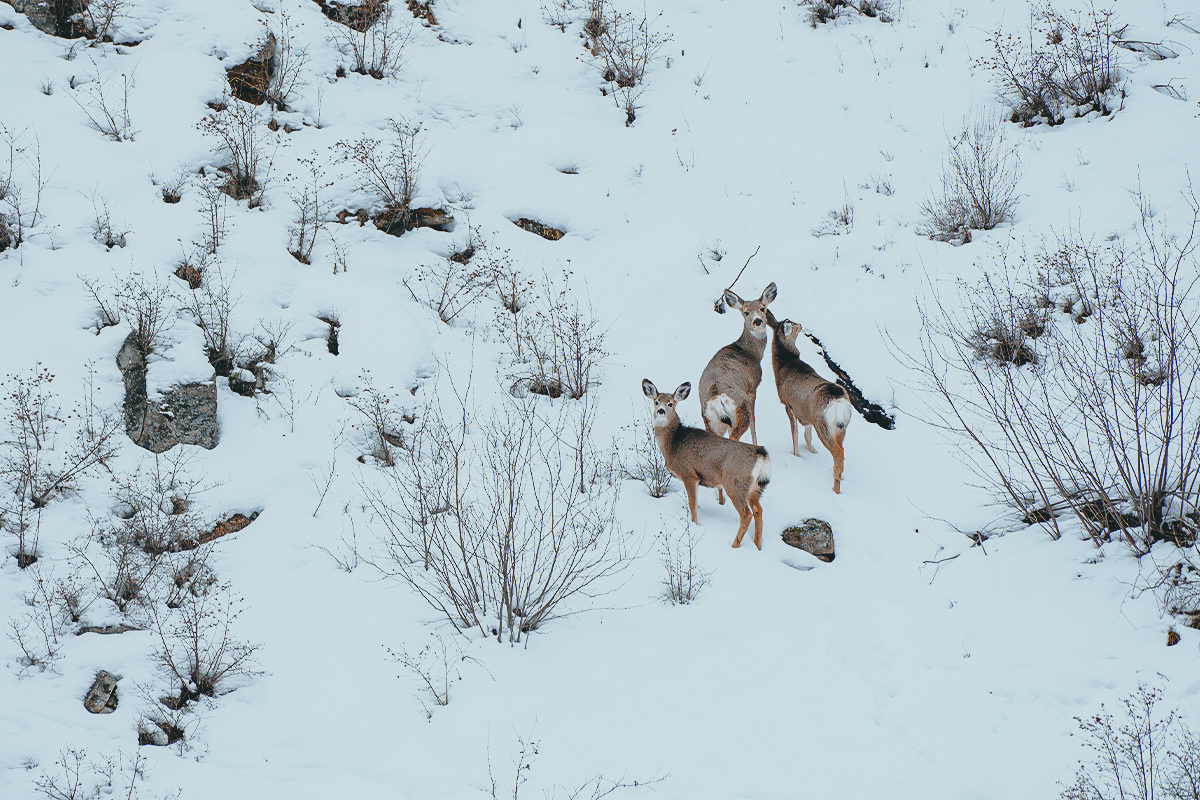
GOOD GEAR – Launch Your Mornings Into Orbit With the BRCC Space Bear Roast
Paying the Bills
As muley numbers decline, states are cutting tags left and right. Fewer licenses mean fewer hunters in the field and, hypothetically, fewer deer killed during hunting season, and many hunters support the cuts.
“I don’t want to hunt places where the deer populations are low,” longtime Colorado deer hunter Kent Ingraham said. “I support reducing tags if it helps the herd. We have to listen to the biologists.”
However, reducing the number of muley tags is a double-edged sword, and it could have a dangerous rippling effect on all North American wildlife.
The lion’s share of conservation dollars comes from hunting and fishing license fees and federal excise taxes on firearms, ammo, and archery gear. Without those precious conservation dollars, state wildlife agencies could be left horribly underfunded and unable to protect critical habitat, effectively monitor mule deer numbers, or implement necessary management measures.
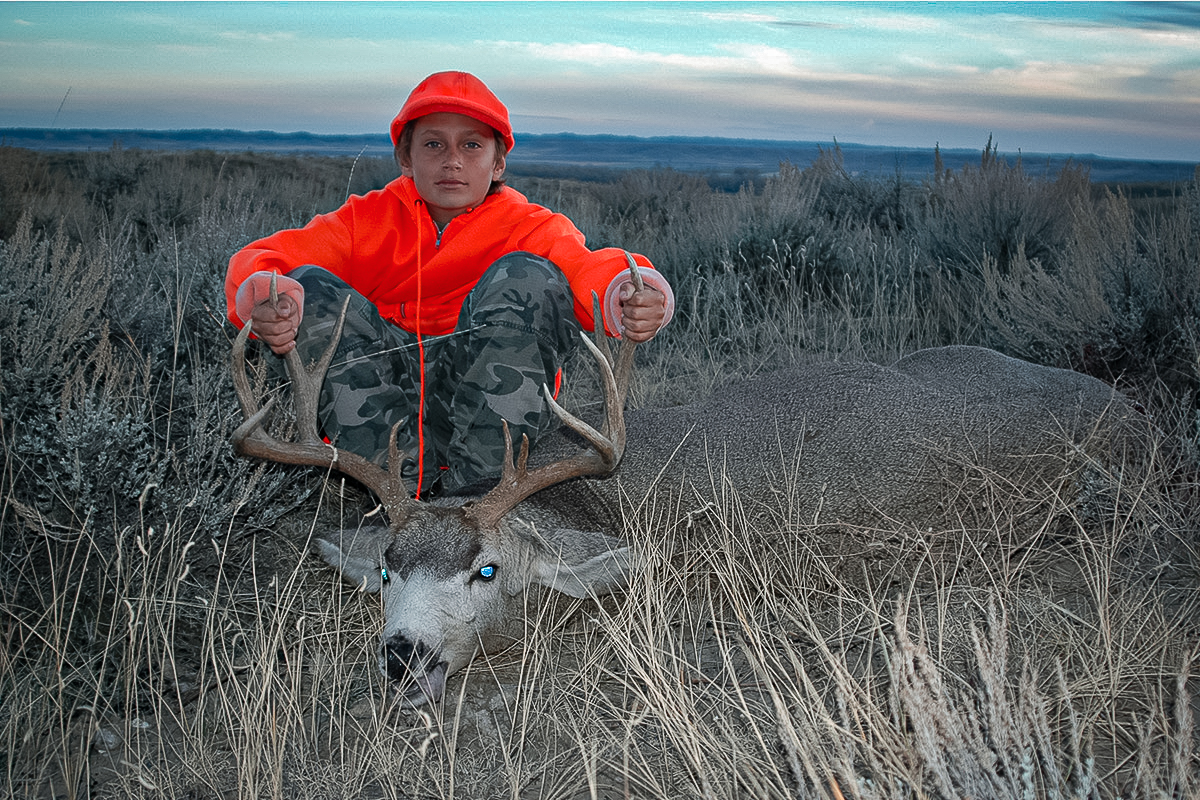
Whether the number of mule deer hunters in the field decreases, muley populations could still suffer. Thankfully, mule deer are far from needing a spot on the endangered species list.
Unfortunately, there are no black-and-white answers here. The number of mule deer that hunters take each hunting season is only one tiny piece of the management puzzle.
According to the U.S. Department of Agriculture, “preservation of summer, winter, and transitional habitat is essential to sustaining mule deer populations.”
Those conservation dollars that hunters regularly pull from their pockets are used far and wide to conserve America’s critical wildlife habitats, and ultimately mule deer need room to roam.
READ NEXT — Mule Deer vs Whitetail Deer: Learn the Differences, Slay Bucks



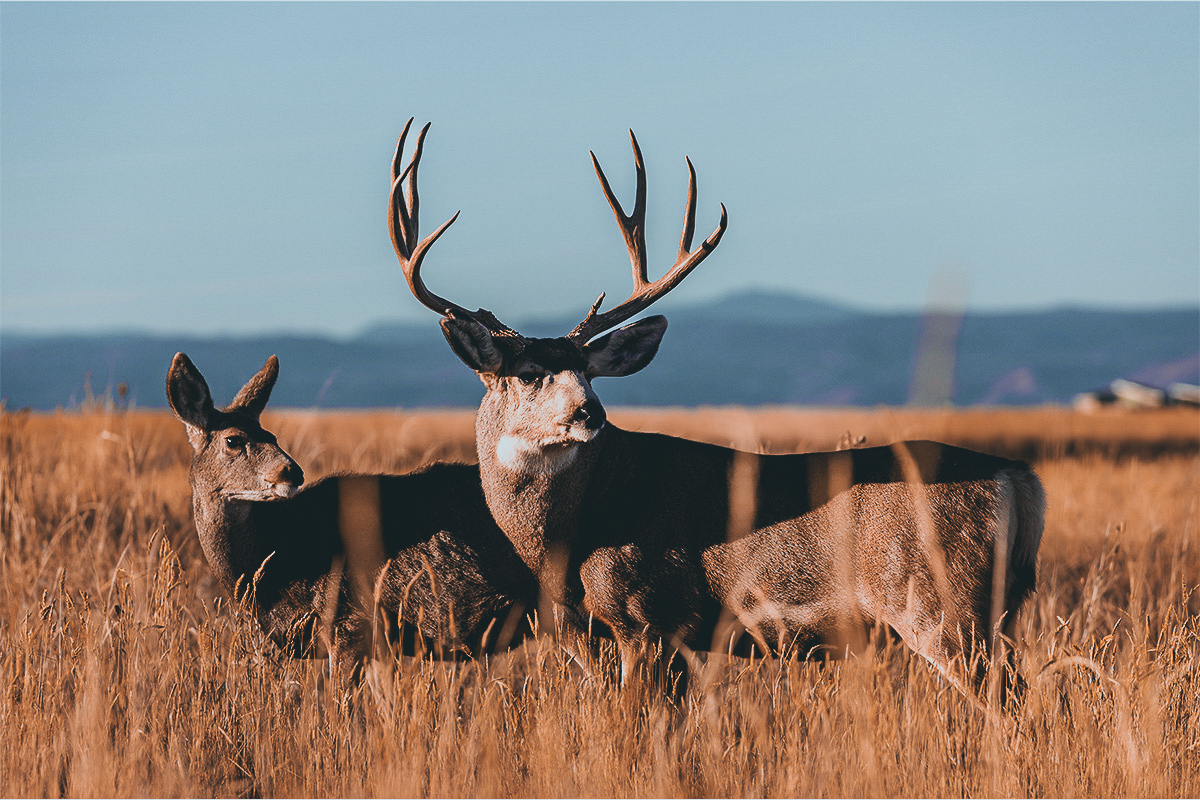



Comments